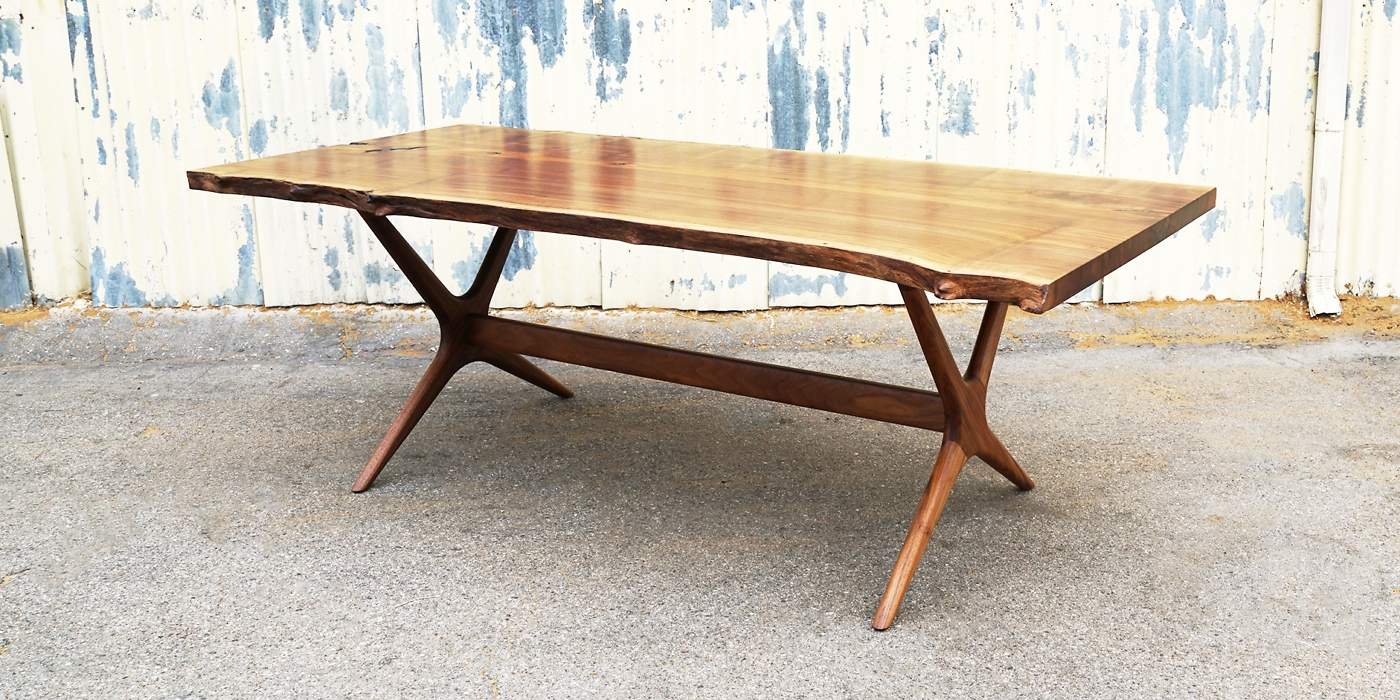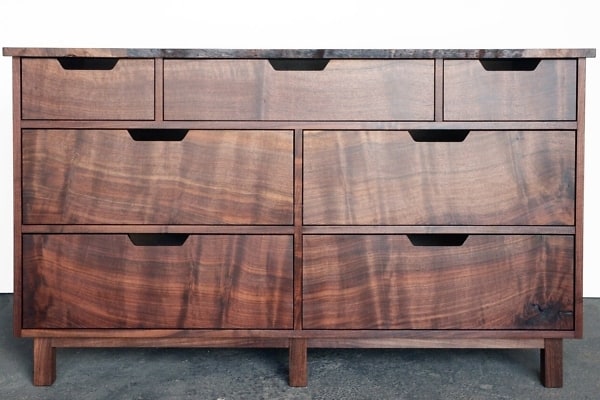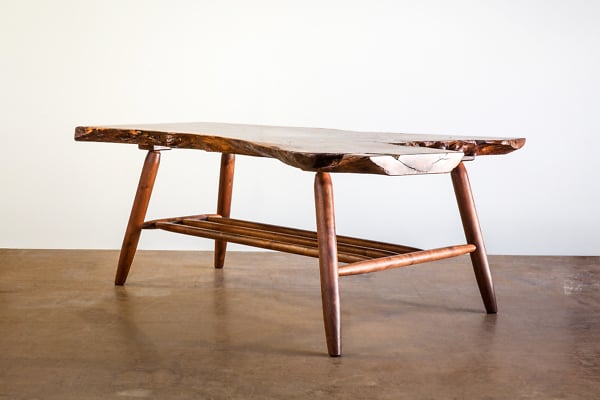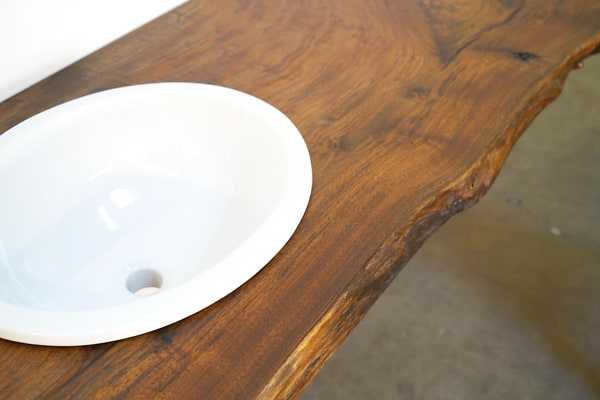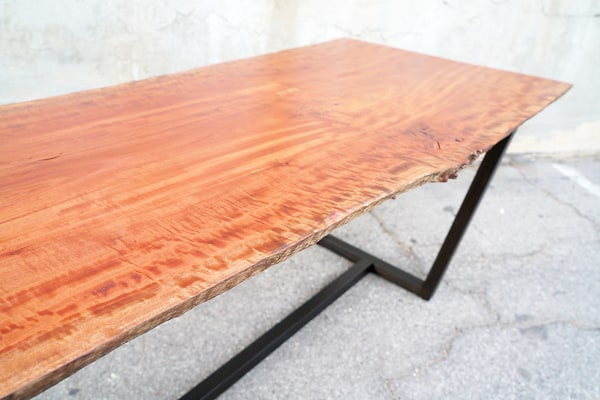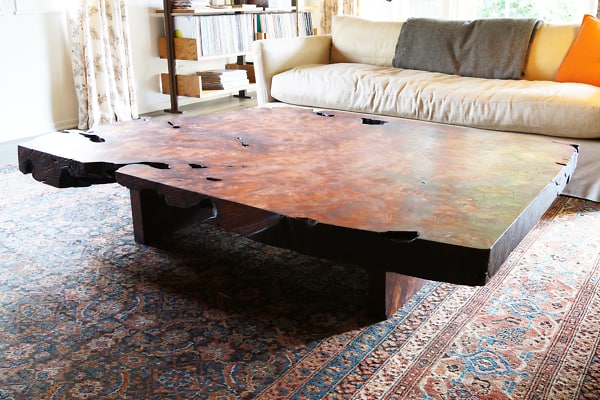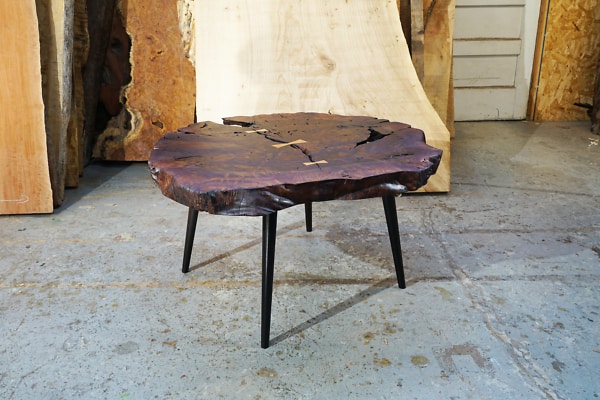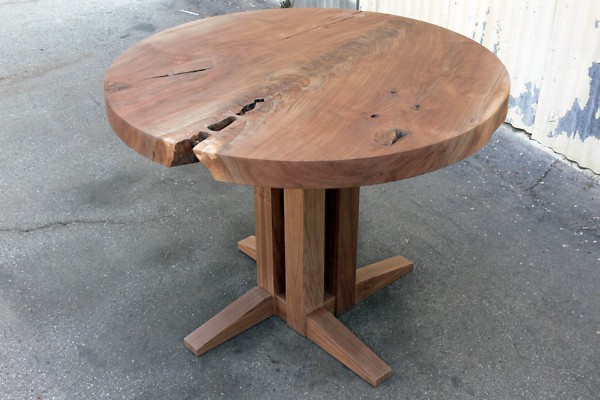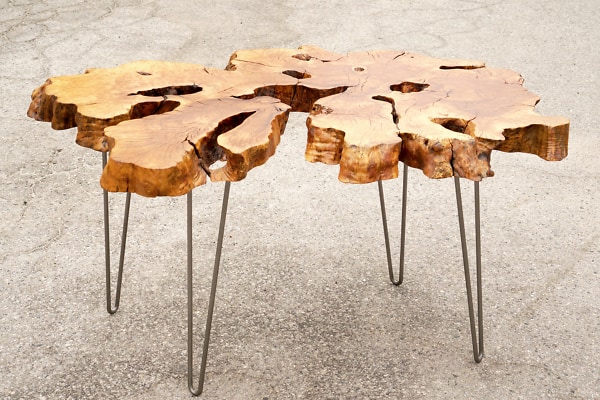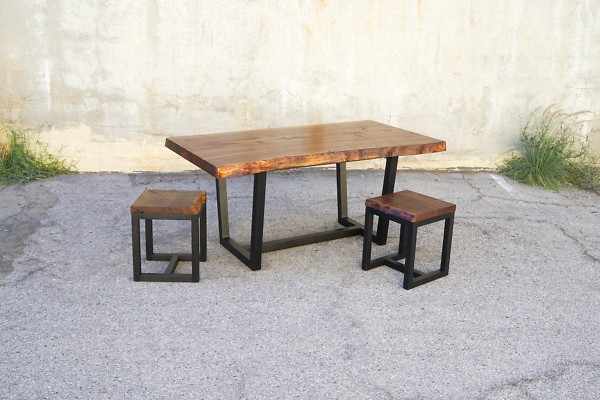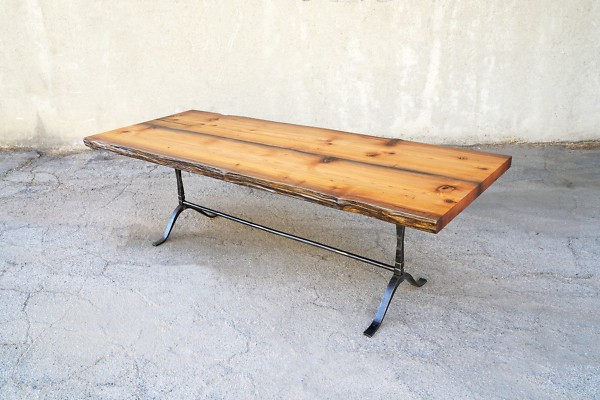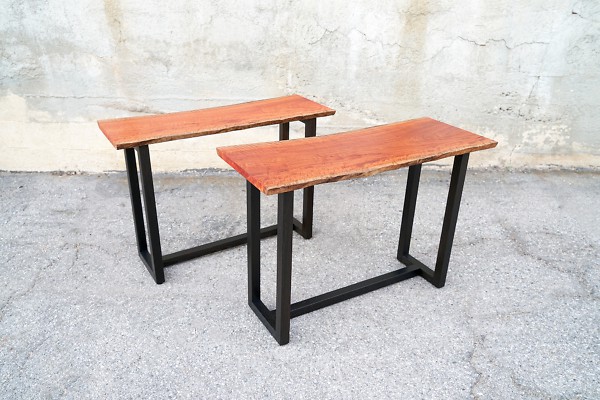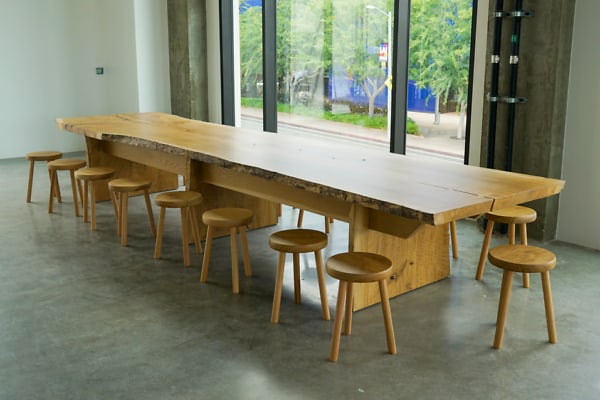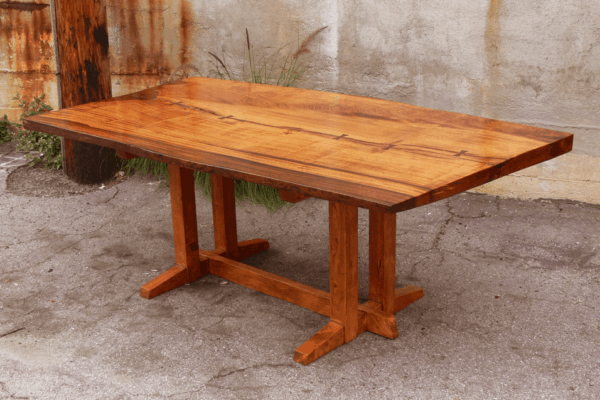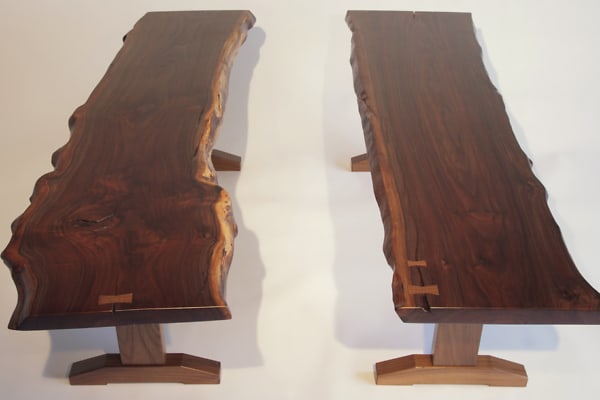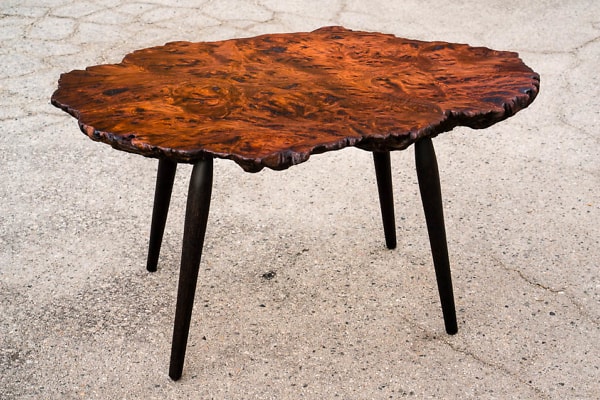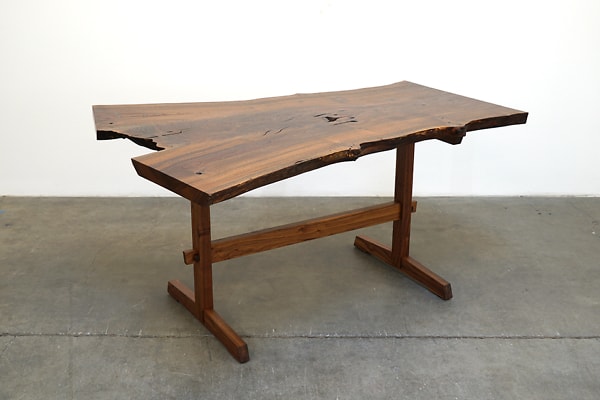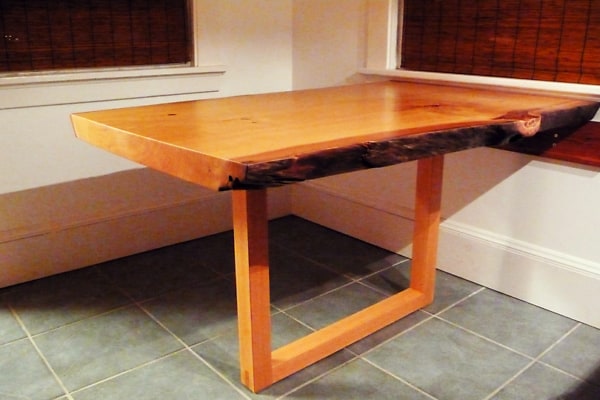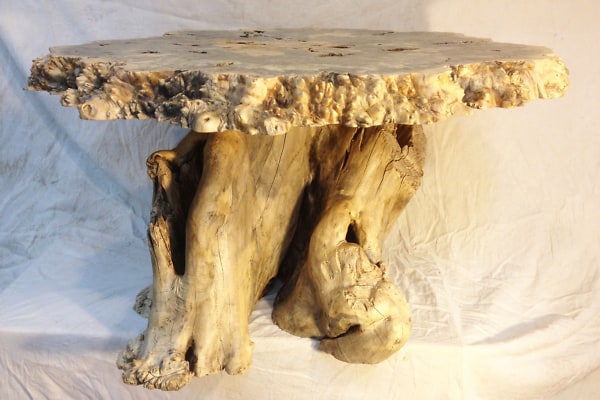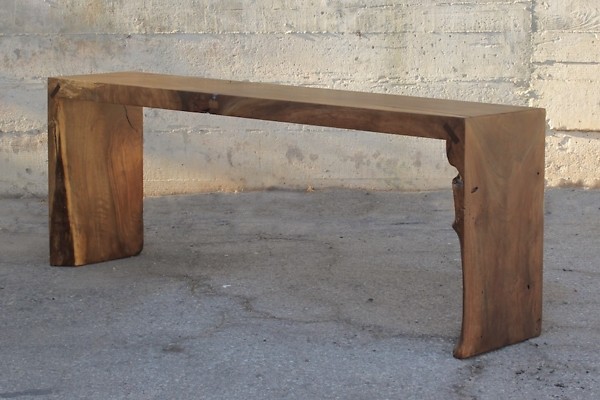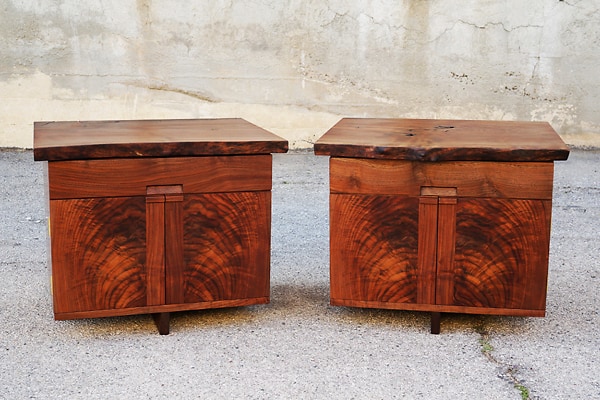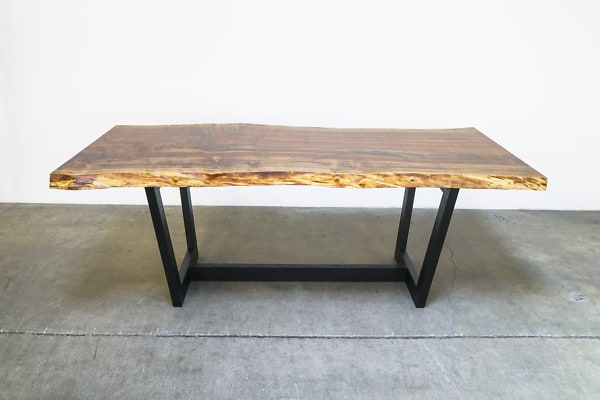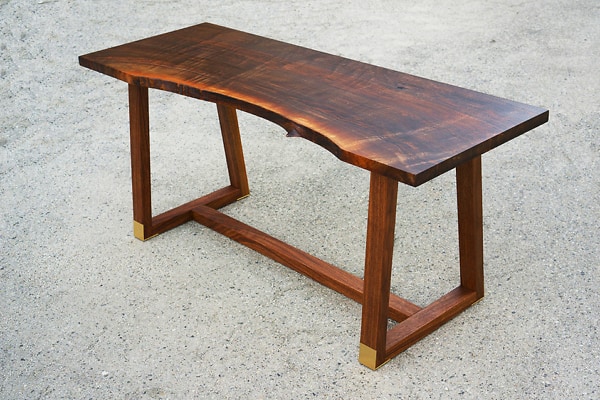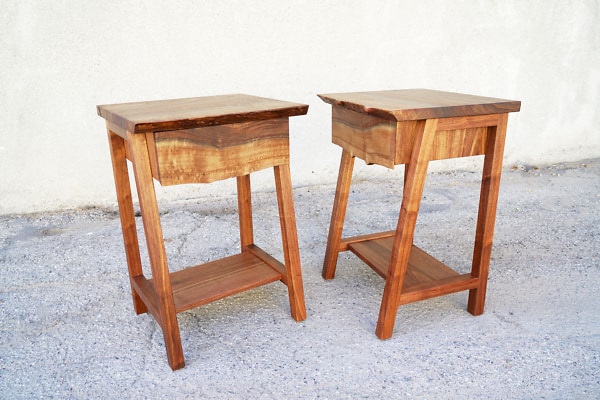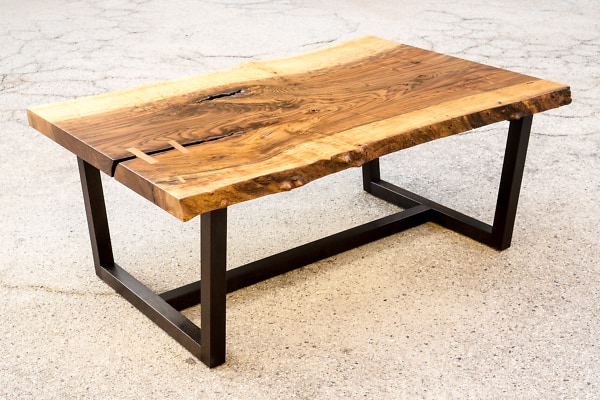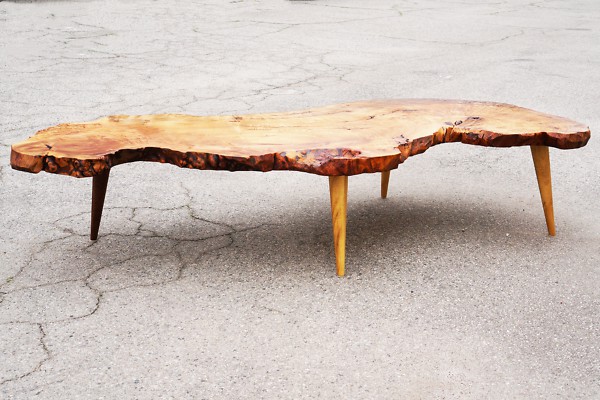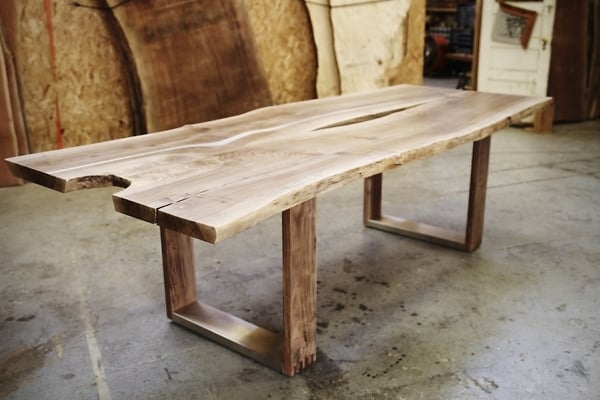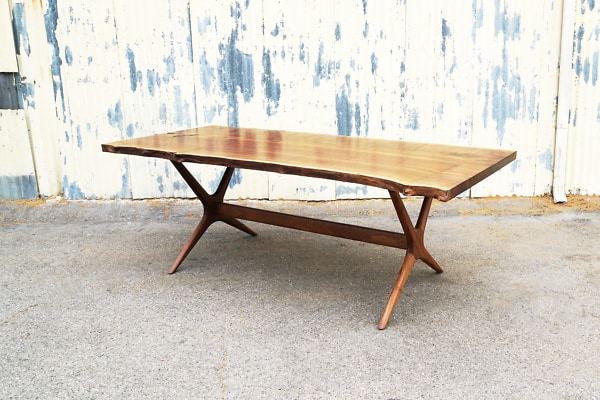We’ve got a thing for building big. And when it comes to custom slab furniture, we’ve got flabby slabby soft spot that’s bigger than Gondor.
Our addiction to monolithic slab furniture has been building for some time. We now furnish our habit year-round with a large inventory of slabs milled and sourced by yours truly from fallen and salvaged trees of California and Oregon.
While slab furniture can sometimes appear simple and rudimentary to design and build, this couldn’t be further from the truth. There are a lot of factors that come into play in both Design and Build phases of a project.
Designing With Slabs
When designed correctly, a slab feature in a piece of furniture can bring movement, dynamism and levity (yes, really) to the piece.
This is often achieved by designing in a manner that is sympathetic to the formal qualities of the source material. And when every slab possesses different aesthetic and structural qualities it makes slab selection and utilization a real artform. Oftentimes a slab’s live edges can be featured to amplify a sense of the organic, and enliven its presence in your space.
Building With Slabs
From a structural standpoint there are a raft of considerations that we take into account throughout the build process. Ensuring the structural integrity of your slab is often far more complex than putting in a few butterfly keys.
No matter how well a piece of wood is seasoned it will always move with fluctuations of temperature and humidity. The effects of wood movement are only amplified with scale and when you’re dealing with a large single-piece slab as the centrepiece of your furniture special considerations come into play. Finding the perfect marriage of movement and structural integrity can mean the difference between a surface that withstands multi-generational use, and one that curves and cracks at the first sign of summer rains.
Become an owner
If you're serious about owning your own unique piece of heirloom-quality American furniture, we're here for you.
Inquire now if you'd like to commission us for something new
